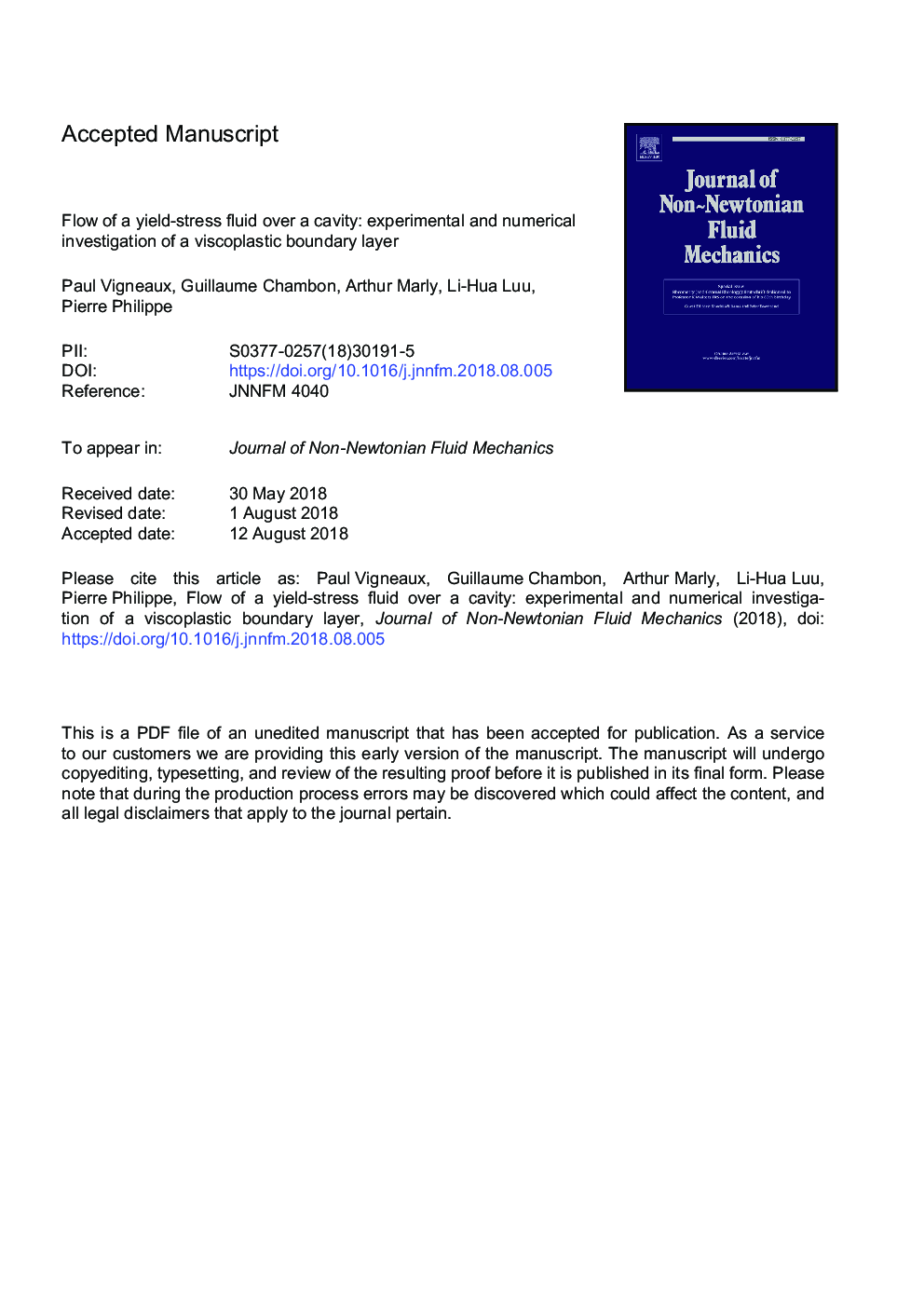| Article ID | Journal | Published Year | Pages | File Type |
|---|---|---|---|---|
| 9952641 | Journal of Non-Newtonian Fluid Mechanics | 2018 | 29 Pages |
Abstract
The ability of viscoplastic fluids to self-select their flow geometry through the formation of unyielded dead zones has important consequences for flows in wavy channels, flows over obstacles, etc. Yet, the mechanisms controlling the formation and dimensions of the dead zones remain poorly understood. We present a detailed cross-comparison of experimental and numerical results concerning channel flows of a viscoplastic fluid over a rectangular cavity filled by the same material. In all the configurations studied, which correspond to moderate values of the Bingham number, a continuous dead zone forms inside the cavity. Both numerical and experimental data reveal that, unlike at high Bingham numbers, the shear-rate profiles above the dead zone display an asymmetric shape. Accordingly, two different flow zones can be distinguished: a Poiseuille-like zone, in which the velocity profile is similar to that over a rigid wall, and a boundary layer ensuring the transition with the dead zone below. It is shown that the effective boundary condition felt by the Poiseuille-like layer is essentially controlled by incoming flow characteristics, such that the thickness of this layer does not obey simple relations with cavity length. Interestingly, however, the thickness of the boundary layer appears to follow a generalized Oldroyd's scaling with cavity length.
Related Topics
Physical Sciences and Engineering
Chemical Engineering
Fluid Flow and Transfer Processes
Authors
Paul Vigneaux, Guillaume Chambon, Arthur Marly, Li-Hua Luu, Pierre Philippe,
